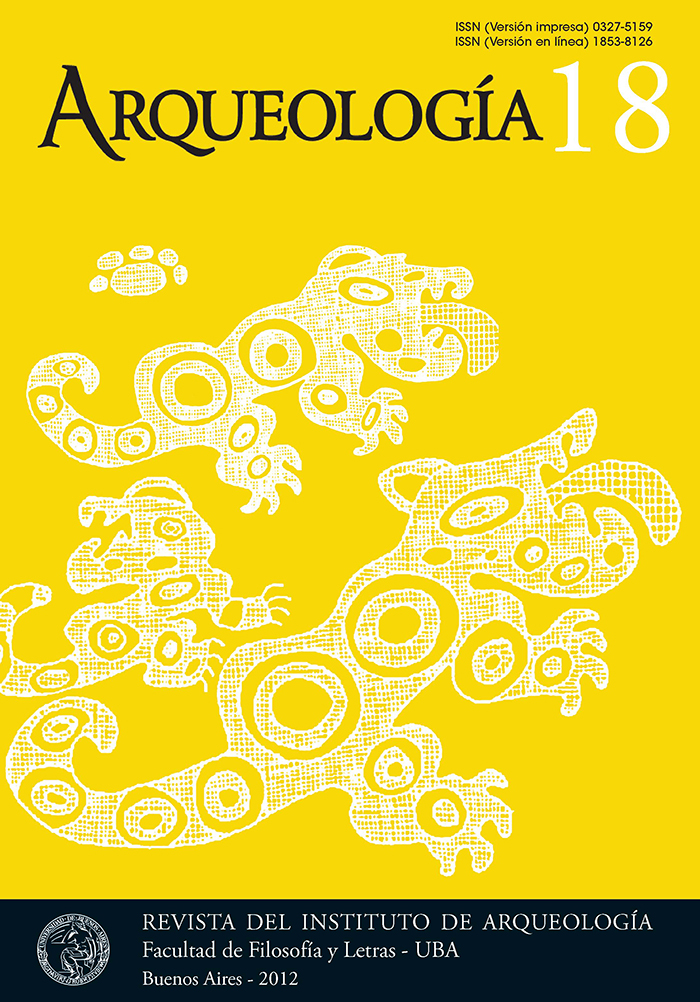Analysis of taphonomic processes in an open air site: The case of Martinez 3, Ambato valley, Catamarca
Keywords:
taphonomy, zooarchaeology, Ambato valley
Abstract
This paper presents the results of the analysis of the taphonomic processes that acted on the archaeofaunal materials from the site Martínez 3, located in the depressed sector of Ambato Valley, Catamarca, Argentina. This is an outdoor mound site that has a prolonged occupation in time ranging from Formative to Aguada times. Thus, the aim of this research was to inquire about the taphonomic processes and agents that acted over the bone remains from a diachronic perspective, comparing both occupations. The studies carried out enable to recognize that, even though the site has long occupation in time, similar taphonomic and processes (natural and cultural) acted over time and did not vary greatly in intensity. Moreover, among them, the main generator and transformer agent of these assemblages were the people.Downloads
Download data is not yet available.
How to Cite
Dantas, M., & Figueroa, G. G. (1). Analysis of taphonomic processes in an open air site: The case of Martinez 3, Ambato valley, Catamarca. Arqueología, 18, 245-255. https://doi.org/10.34096/arqueologia.t18.n0.1816
Issue
Section
Reports
Authors who publish in this journal agree to the following conditions:
- Authors retain copyright and yield to the journal right of first publication with the work registered with attribution license Creative Commons, which allows third parties to use the published always mentioning the authorship of the work and first publication in this magazine.
- Authors can make other independent and additional contractual arrangements for the non-exclusive distribution of the version of the article published in this issue (p. Eg., Inclusion in an institutional repository or publish it in a book), provided that clearly indicate that the work was published for the first time in this magazine.
- It allows and encourages the author / s to publish their work online (eg institutional or personal pages) before and during the process of revision and publication, as it can lead to productive exchanges and greater and more rapid dissemination of work published (See The Effect of Open Access).





(1)13.png)






1.jpg)
1.jpg)


13.png)
1.png)


(1)1.png)









